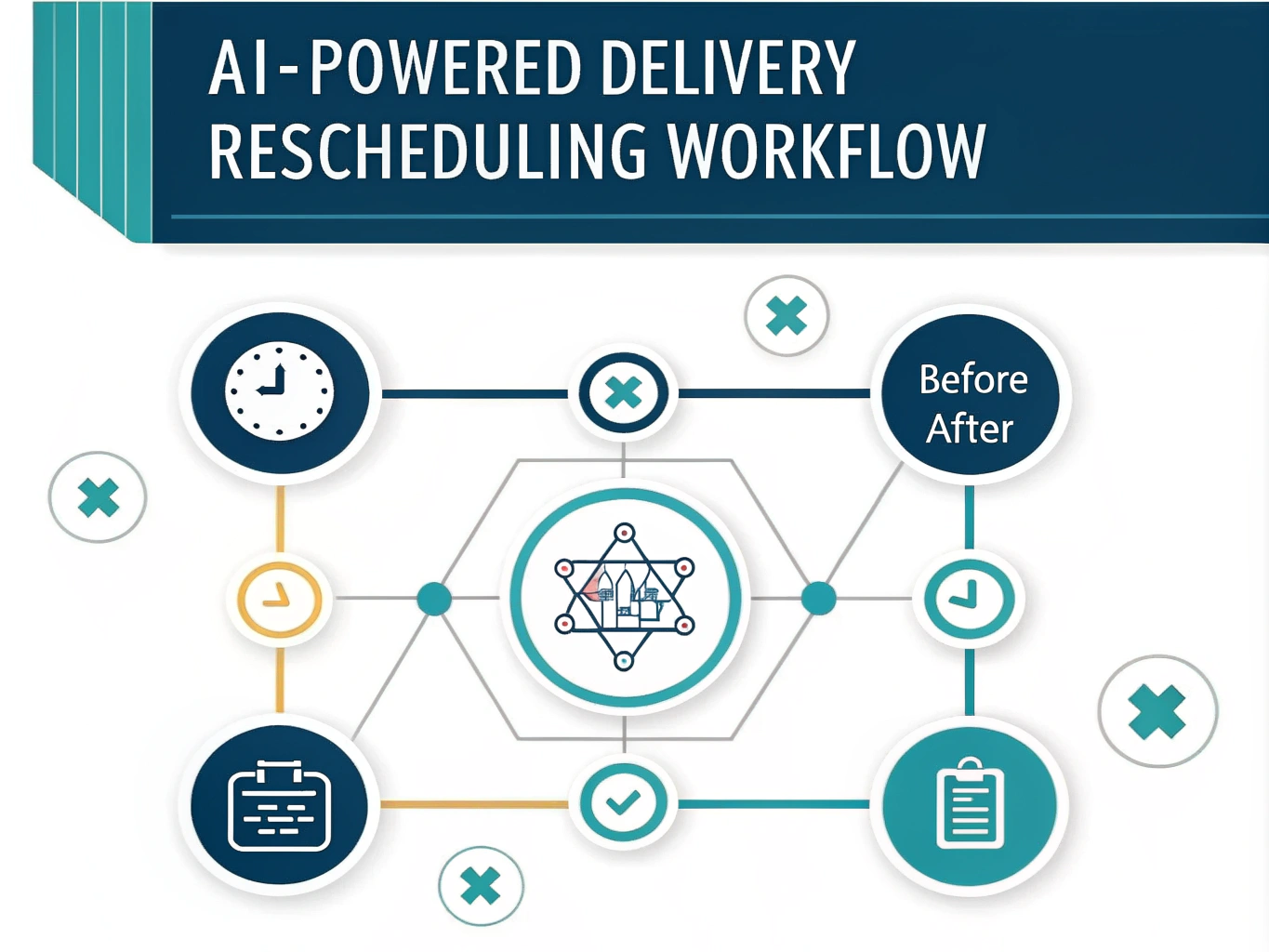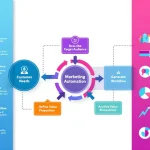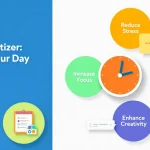Automated Workflow Plan Generator
Is this tool helpful?
How to Use the Automated Workflow Plan Generator Effectively
This tool helps you create an AI-powered delivery rescheduling workflow tailored to your business needs. To get the best results, fill each field thoughtfully based on your current systems and communication channels.
- Email Monitoring System: Enter the system you use to monitor customer emails. For example, you could input Freshdesk or Zoho Desk.
- Internal Communication Platform: Specify the platform your team uses internally to collaborate. Examples include Slack or Basecamp.
- Customer Communication Channels: List the ways you communicate with customers. You might write live chat, Telegram, phone calls.
- Existing Workflow Tools (Optional): Describe any software currently integrated into your process, such as Oracle NetSuite, Jira, or Zendesk.
- Special Requirements (Optional): Mention specific constraints or needs, like HIPAA compliance or integration with Salesforce CRM.
After completing these fields, click the “Generate Automated Workflow Plan” button. The tool will process your inputs to deliver a customized plan that perfectly matches your operational setup.
Introduction to the Automated Workflow Plan Generator
The Automated Workflow Plan Generator is designed to simplify how businesses manage order rescheduling requests, boosting efficiency and customer satisfaction. This AI-driven tool crafts detailed workflows that automate communication, scheduling, and processing of reschedule demands.
By leveraging advanced AI systems such as ChatGPT or Gemini, the tool generates a plan tailored to your existing tools and communication frameworks. This plan helps your team reduce manual steps, improve accuracy, and streamline interdepartmental coordination.
Purpose and Benefits
- Reduce manual effort in handling rescheduling requests
- Lower the risk of errors in order adjustments
- Speed up responses to customer inquiries
- Enhance communication between customer service, logistics, and production
- Increase customer satisfaction through timely, accurate updates
Implementing this automated plan leads to measurable improvements in your order management workflow, resulting in greater operational efficiency and stronger customer loyalty.
Practical Use Cases for the Automated Workflow Plan Generator
This tool fits businesses across multiple industries aiming to automate and optimize their rescheduling processes. Here are some real-world applications:
1. E-commerce Retailers
E-commerce companies often handle large volumes of rescheduling requests, especially during sales or holidays. This generator helps automate order adjustments while maintaining excellent customer communication.
Example:
An online gadget store used the generated workflow to manage 10,000 daily rescheduling requests during peak season, improving processing speed by over 80%.
2. Furniture and Appliance Delivery Services
Managing the delivery of bulky items requires precise scheduling and clear communication. The automated plan coordinates updates across logistics and customer service teams.
Example:
A national furniture chain reduced missed deliveries by 70% by implementing the AI-generated workflow that provided customers with easy rescheduling options.
3. Food Delivery Services
Fast turnaround times are critical in food delivery. The tool supports real-time reschedule handling, minimizing waste and boosting customer retention.
Example:
A meal service provider cut food waste by 25% after integrating the automated rescheduling process, improving on-time delivery rates significantly.
4. B2B Supply Chain Management
Complex supply chains benefit from the seamless data flow the generated workflow provides, reducing production delays and streamlining supplier communication.
Example:
A manufacturing firm decreased production hold-ups by 50% due to better coordination with suppliers through the automated plan.
5. Healthcare Equipment Delivery
Efficient and accurate delivery rescheduling is crucial in healthcare. The workflow ensures critical equipment is delivered on time with minimal disruption.
Example:
A medical supplier achieved near-perfect on-time delivery rates for hospitals after adopting the AI-based scheduling and communication workflow.
Key Advantages of Using the Automated Workflow Plan Generator
1. Saves Time and Resources
Automation cuts down hours spent on manual data entry and order modifications, with staff freed up for more strategic tasks.
- Eliminates repetitive manual processes
- Reduces human error in updates
- Improves operational productivity
2. Improves Customer Experience
Customers receive prompt responses and consistent communication, enhancing their satisfaction and trust in your brand.
- Instant confirmation of rescheduling requests
- Proactive notifications about order status changes
- Clear, accurate communication reduces confusion
3. Boosts Operational Efficiency
The workflow connects teams across sales, production, and logistics, enabling real-time updates and minimizing delays.
- Streamlined interdepartmental communication
- Improved scheduling coordination
- Lower risk of miscommunication and errors
4. Provides Data-Driven Insights
Gain actionable analytics on customer behavior, communication effectiveness, and rescheduling trends to optimize your operations.
- Identify patterns in rescheduling requests
- Measure channel effectiveness and response rates
- Track workflow performance and bottlenecks
5. Scales with Your Business
The plan adapts to increased order volumes without requiring proportionate resource increases, supporting business growth efficiently.
How the Automated Workflow Plan Generator Solves Common Business Challenges
1. Cuts Down Inefficient Manual Tasks
Replace time-consuming manual order rescheduling with an automated framework that speeds up processing and reduces workforce strain.
2. Ensures Consistent Customer Communication
Maintain clear, timely updates to customers by automating notifications and acknowledgments, preventing dissatisfaction caused by delays or errors.
3. Bridges Communication Gaps Between Teams
Share real-time information seamlessly among sales, production, and logistics, keeping everyone aligned and reducing errors.
4. Handles High Volume Rescheduling with Ease
Manage spikes in order changes, such as during sales or seasonal demand, without compromising response time or accuracy.
Frequently Asked Questions (FAQ)
1. Who benefits from this Automated Workflow Plan Generator?
Any business managing customer order rescheduling can use this tool. It suits e-commerce firms, service providers, manufacturers, and B2B suppliers alike.
2. Do I need technical skills to implement the generated workflow?
Basic IT knowledge helps, but the plan is designed for accessibility. It includes clear integration instructions and suggestions that businesses can adapt with or without deep technical expertise.
3. Can the workflow handle multiple languages?
Yes. The plan recommends AI-driven translation tools or multilingual customer service platforms to support diverse customer bases.
4. How long does implementation take?
Most businesses can launch a basic automated workflow within 2 to 4 weeks. Additional customization and optimization often continue beyond initial deployment.
5. Will the automated plan integrate with my existing CRM or ERP systems?
The generated workflow includes integration recommendations for common CRM and ERP platforms. For custom systems, it provides general API integration guidelines.
6. How does the workflow manage complex rescheduling scenarios?
The plan covers multi-item and interdependent deliveries and defines escalation procedures for cases needing human attention, ensuring smooth handling of complex orders.
7. What measures ensure the accuracy of rescheduled orders?
The workflow uses multiple validation steps, such as inventory cross-checks and customer confirmations, to prevent mistakes in order updates.
8. Can this workflow sustain high volumes during peak periods?
Yes, the design supports scalable automation that manages increased rescheduling requests while maintaining quality and timely responses.
Important Disclaimer
The calculations, results, and content provided by our tools are not guaranteed to be accurate, complete, or reliable. Users are responsible for verifying and interpreting the results. Our content and tools may contain errors, biases, or inconsistencies. Do not enter personal data, sensitive information, or personally identifiable information in our web forms or tools. Such data entry violates our terms of service and may result in unauthorized disclosure to third parties. We reserve the right to save inputs and outputs from our tools for the purposes of error debugging, bias identification, and performance improvement. External companies providing AI models used in our tools may also save and process data in accordance with their own policies. By using our tools, you consent to this data collection and processing. We reserve the right to limit the usage of our tools based on current usability factors.







